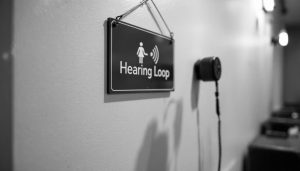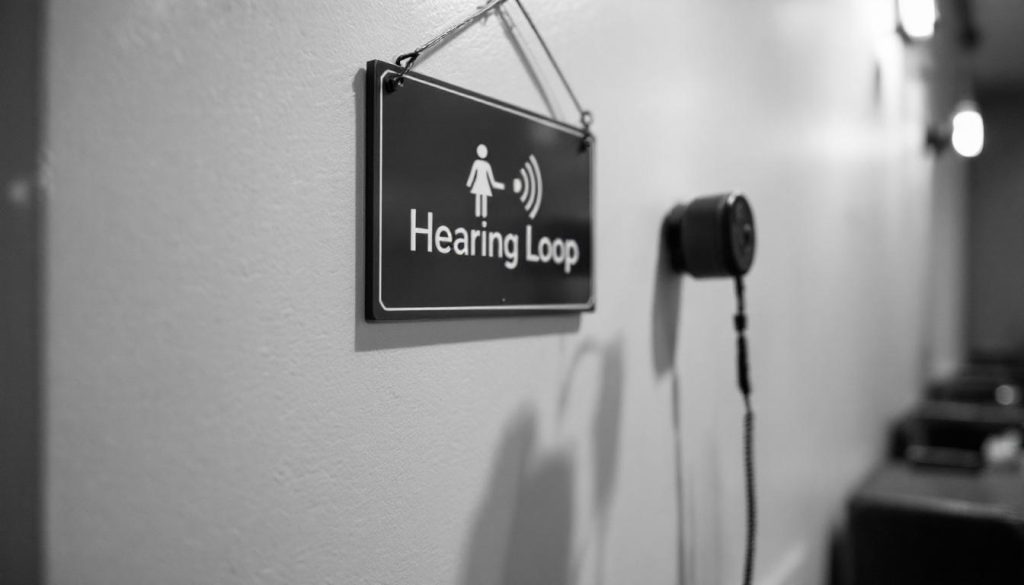Assistive listening systems have become increasingly accessible and diverse, offering significant support to individuals with hearing loss as well as those without hearing aids or cochlear implants. These technologies are designed to improve speech clarity and overall listening experiences in various public and private settings by overcoming common auditory challenges such as background noise, distance from sound sources, and acoustical interference.
Hearing care professionals play a crucial role in guiding patients to understand and effectively use assistive listening systems. Education about the different types of systems and how they integrate with hearing aids or cochlear implants can empower users to fully benefit from these technologies. For example, recognizing venue signage that indicates the presence of assistive listening devices, understanding what technology their hearing aids support—such as telecoil (t-coil), Bluetooth, or Auracast—and knowing how to activate these features are pivotal steps for users. Venues are required under legislation like the Americans with Disabilities Act (ADA) to provide assistive listening options, and users should be encouraged to inquire and request these services if needed.
Several types of assistive listening systems serve different environments and user needs:
- Hearing loop systems utilize a copper wire loop installed around designated spaces that create a magnetic field. This transmits audio to telecoil-equipped hearing aids, cochlear implants, or dedicated receivers, delivering sound directly to the ear while reducing ambient noise. These systems are particularly common in Europe and increasingly found in US venues such as theatres, houses of worship, transportation hubs, and ticket counters. It is important to note that even if a hearing aid has a t-coil, it may not be activated by default, so hearing care providers should ensure patients know how to use this feature.
- Radio frequency (RF) systems send audio signals over radio waves to receivers typically worn around the neck. These receivers can connect to headphones or work with hearing aids via integrated neck loops, allowing users to move freely within the venue while maintaining sound quality. RF systems are versatile and user-friendly options for assistive listening.
- Infrared (IR) systems use invisible infrared light to transmit audio to receivers that must maintain a line of sight with the transmitter. This makes IR systems ideal in spaces where sound confidentiality is vital, such as medical offices or courtrooms, as the signal does not penetrate walls.
- Audio-over-Wi-Fi systems enable listeners to stream venue audio directly to their smartphones using a downloadable app. This option often supports Bluetooth-enabled hearing aids and earbuds, offering convenience and discretion, particularly effective in multi-room environments like university campuses, fitness centres, and theatres. However, audio latency may vary depending on the smartphone’s age and manufacturer.
- Bluetooth Low Energy (LE) Audio and Auracast™ broadcast audio represent the latest advancement in assistive listening technology. Auracast allows a single audio transmission to be broadcast to an unlimited number of compatible devices without individual pairing, akin to connecting to a Wi-Fi network. This low-latency, energy-efficient technology delivers high-quality sound and is becoming more widely incorporated into hearing aids, earbuds, headphones, and public venues. Though it promises to revolutionize accessibility, adoption will take time due to the cost and life cycle of hearing aids. Industry forecasts predict billions of LE Audio-enabled devices will ship by 2028, underlining the potential scale of this technology. Notably, some manufacturers already offer Auracast-enabled hearing aids and accessories, as well as TVs equipped to broadcast directly to compatible devices.
The combination of traditional systems with newer technologies like Auracast offers users greater flexibility to choose devices suited to their personal hearing needs and preferred environments. It also presents an opportunity for venues to enhance inclusivity and comply with accessibility standards by offering a range of assistive listening options.
Overall, awareness and education remain vital to maximise the benefits of these technologies. Patients need to be informed about the types of assistive listening systems available and how to access and use them effectively. This knowledge can empower them to improve their communication experiences in public spaces, workplaces, educational settings, and social venues. Hearing care professionals are ideally positioned to provide this education, tailoring guidance based on individual hearing device features, lifestyle needs, and local accessibility provisions.


